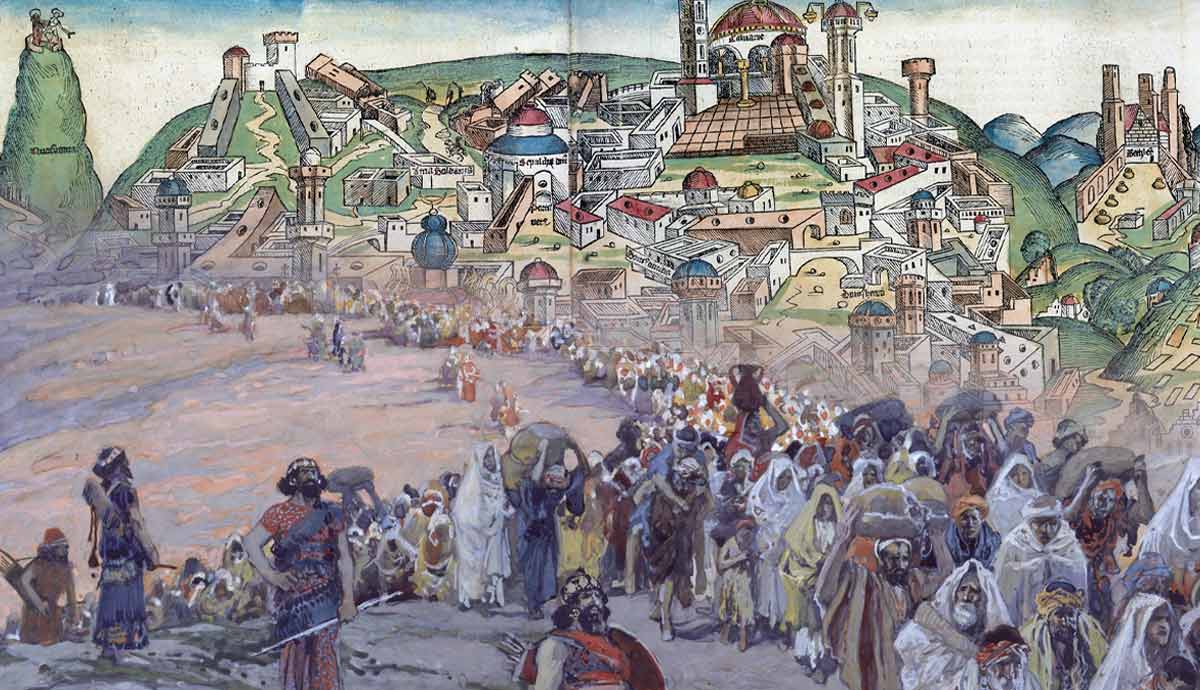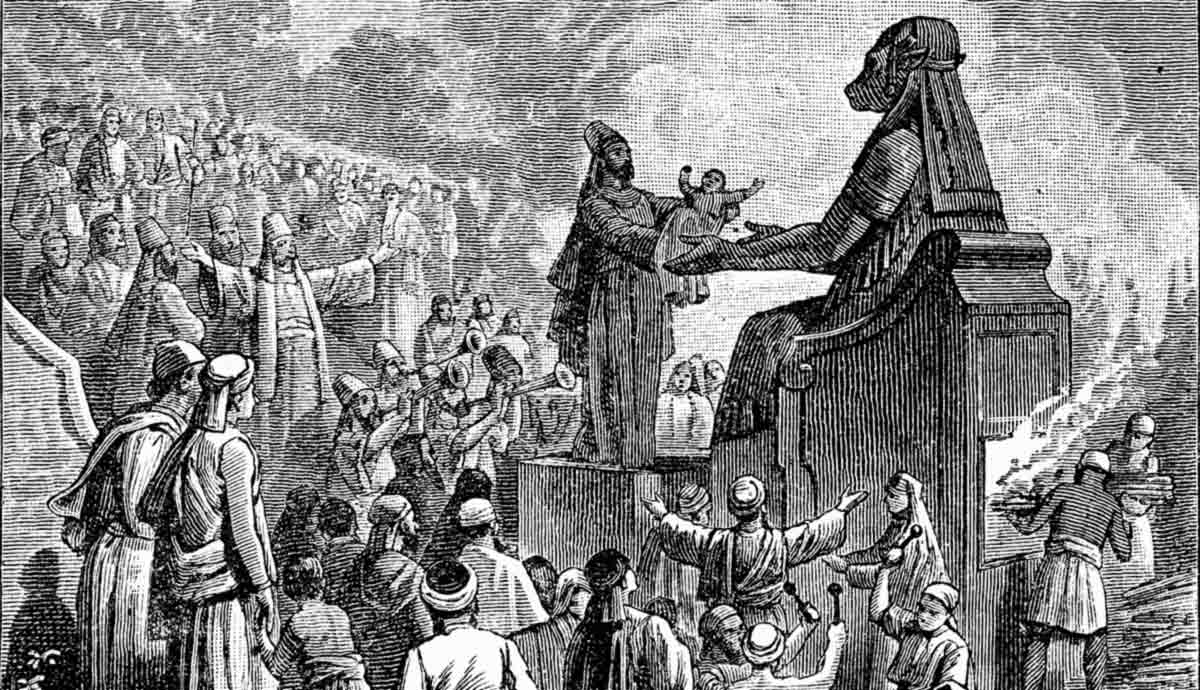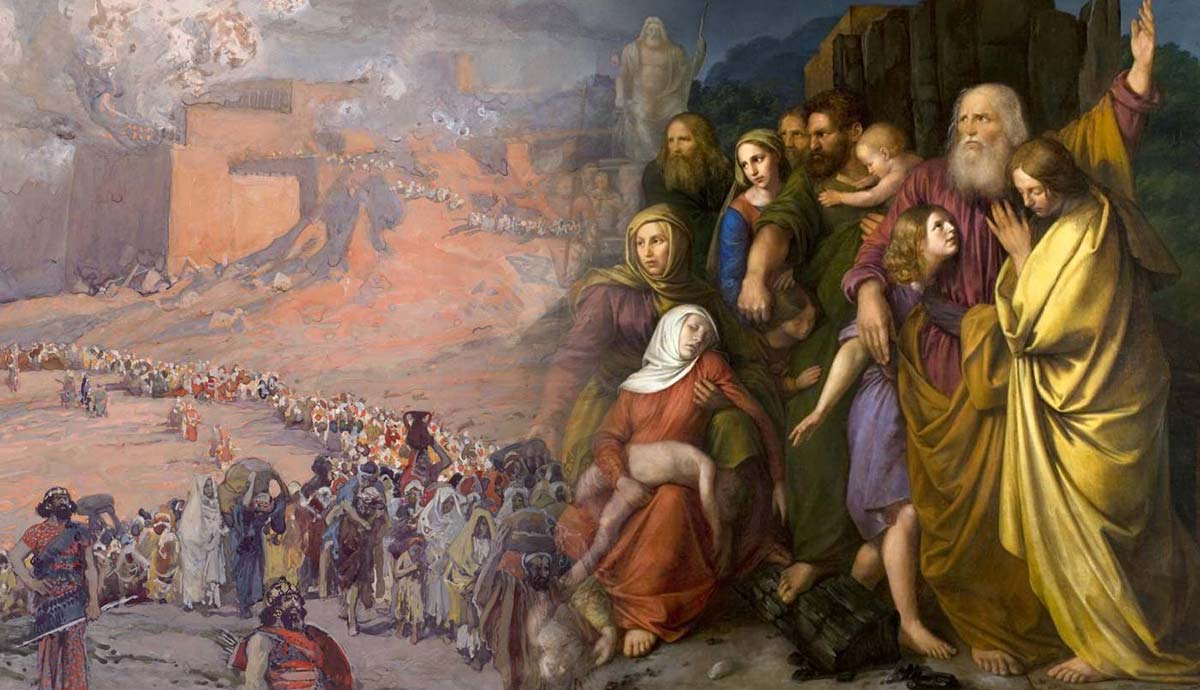
The Babylonian exile had a profound impact on Judaism. In the minds of the exiles, it must have seemed like the last remnants of ancient Israel would be lost. First, the twelve tribes split into the Northern and Southern Kingdoms of Israel and Judah respectively, and then the two kingdoms went to war against each other. Later, the Northern Kingdom went into exile under the Assyrians, never to return. Of the glory of ancient Israel, only the tribes of Judah and Benjamin remained. During the Babylonian exile, they were in danger of losing the legacy of being the people of God. So, how did the Babylonian exile shape Judaism?
The Babylonian Exile

The Babylonian exile was not a single event. It happened in stages, with the major wave occurring in 586 BCE. During this event, the Babylonians razed the First Temple that Solomon built to the ground and destroyed Jerusalem. The destruction of these two iconic places had a major effect on the exiles. Jerusalem and the Temple, to a large extent, were a central part of the national identity of Israel as the people of God. Now, they have lost the promised land, their capital city, and the place where God resided among them. The loss of these two icons posed an existential threat to what remained of ancient Israel as a nation.
The Book of Daniel provides some insight into the methods the Babylonian captors used to strip the Israelites of their national identity. Daniel 1 details how the Babylonians co-opted the sons of royal and noble descent among the people of Israel to serve in Nebuchadnezzar’s court. These elites had to attend training as Chaldeans, which meant exposure to the culture, religion, traditions, and worldview of the Babylonians.
The Babylonians also changed the names of the Israelite nobles to reflect the Babylonian gods instead of the God the Israelites served in Jerusalem. They were also required to eat from the table Nebuchadnezzar had set before them. Babylonian cuisine went contrary to Israelite traditions and faith. The Israelite elite were more than likely castrated since Nebuchadnezzar assigned them to the care of Ashpenas, the chief over the eunuchs. Reprogramming the elite among the exiles to a new culture and religion would likely have resulted in the rest of the exiles accepting their fate and adopting the new culture.

Throughout history and across cultures and religions, times of adversity and suffering tend to result in a search for the divine. It was no different for the Israelites during the Babylonian exile. In the writings of prophets such as Isaiah, Jeremiah, and Daniel, we see reflection on the reason for the exile: the unfaithfulness of the people of God. The Jews started worshiping other gods, though God warned them through their prophets that their actions would lead to exile. They would not repent.
In the Psalms and some prophetic works, we see how the exiles realized their suffering resulted from disobeying God. During the Babylonian exile, some captives gathered documents that recorded their cultural and religious heritage and possibly even penned some oral traditions to preserve them for future generations. They also documented their experiences, reflecting on their longing for their homeland (see Psalm 137). Most scholars agree that much of the Old Testament canon was compiled, redacted, and edited during this period and soon after during the later Second Temple Period.
Theological Reflection

It was difficult for the exiles to reconcile the idea of divine favor as God’s people with their current situation. They had to consider the words of warning the prophets spoke on exile and divine punishment for their disobedience and apostasy. Their situation reflected divine justice for abandoning their covenant with God. Yet, the words of the prophets also included the hope of restoration and renewal. There was a future that would see them return to their land and rebuild Jerusalem and the Temple.
Daniel’s prayer in Daniel 9 reflects his mourning and repentance for the corporate sins of the nation. He was aware that the 70 years of exile were almost over. He served under the Babylonians and in the Medo-Persian Empire. The latter let the exiles willing to return to their native land go so they could rebuild their city, Jerusalem, and the Temple.

The exiles could not observe several Jewish feasts while the Temple did not exist. The Jews reinterpreted their laws and practices to accommodate the challenges the exiles faced. They emphasized the observance of the seventh-day Sabbath since they could not observe the feast days that required a pilgrimage to Jerusalem. The exiles additionally kept their distinctive character by strict observance of the dietary laws of the Torah.
Worship in Israel centered around the temple. With the temple destroyed, the Jews needed an alternative form of gathering and a place for theological reflection. Most scholars agree that the synagogue, which means “bring together” or “gather,” originated during the Babylonian exile. To this day, Jews worldwide gather in synagogues to practice their faith and study the Torah. This development allowed communities to develop where they could resist assimilation with Babylonian culture, and it allowed them to retain observances such as the Sabbath and dietary laws. These synagogues also provided a space for prayer, scripture reading, and social cohesion.
The exile also saw an increased emphasis on spiritual practices like prayer and meditation in the absence of the ritual practices that required Temple attendance. Deeper reflection on the meaning of the covenant and the relationship between God and his people led to innovative ways to interpret scripture in the light of adversity.
Reconstruction of a City, a Temple, and a Nation

Cyrus, Darius, and Artaxerxes issued decrees relating to rebuilding Jerusalem. When the exiles returned to engage in these projects, enemies often attacked them to prevent them from completing their work. The desire to restore what they lost during the exile was such that the builders endured until they restored the walls of Jerusalem and rebuilt the Temple.
The rebuilt temple was nothing like the first in glamor or glory. It left a lasting reminder to future generations of the effects of disobedience and apostasy. Synagogue worship remained a practice among the returned exiles because its benefits were undeniable. There was a new appreciation for their unique culture and religious practice after the Babylonian exile.
Though many Jews did not return, those who did, invested in reestablishing and preserving their heritage. The psyche of the Jews changed forever due to the trauma of exile and the near-extinction of the Jews as a people. The Book of Esther details such an attempt. The people of God gained a new appreciation for the providence of God. They carried hope and resilience with them in the Second Temple Era of the Israelite nation.

Renewed methods of interpretation of the Torah saw new schools of thought develop into various religious sects and movements, such as the Pharisees, Sadducees, Essenes, and Zealots. These sects were still prevalent in the time of Jesus. The reinterpretation of the Torah saw a rise in the number of laws the sects wished to impose. Jesus opposed many of these laws, which caused proponents to consider him a threat to them.
During and after the exile, there was also an increase in the number of apocalyptic texts. The traumatic experiences of the exiled Jews may have prompted the increase. Daniel and Ezekiel are two examples of such apocalyptic works.
Another development in Judaism was a more robust defense of their monotheistic religion. During the Babylonian exile, their captors exposed the Jews to polytheistic religions and, among other concepts, the Enuma Elish creation myth. Some scholars believe the Genesis 1 and 2 creation narrative developed in response to, and during or after the Babylonian exile.
Conclusion

The Babylonian exile had a significant impact on Judaism. Many aspects of this impact are evident today. Synagogue worship is arguably the most notable. The exile resulted in a need to reinterpret, preserve, and reestablish Jewish thought, literature, and practice.
The reinterpretation of the Torah led to several sects developing within Judaism that lasted up to and beyond the time of Jesus. The themes of hope and resilience in the works of the prophets who spoke to the exiles seem to have established a legacy of endurance that permeates Judaism.
Throughout history, the Jews have been persecuted many times and came close to annihilation on some occasions. Yet they endure and seem to have a sense of community that supersedes nationality, geographic location, and age. Maybe the residual effect of the Babylonian exile changed their society in a way that finds its expression in their sense of unity and belonging even today.










